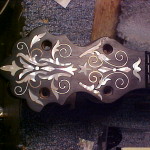Missing inlay is not all that uncommon in banjos. The older ones, like this Thoroughbred, have a lot of inlay and it is held in place with animal hide glue, but I have seen a few newer instruments with inlay missing as well. There are a couple of ways to reproduce the missing inlay with a reasonable degree of accuracy. One way is to press a piece of paper into the open cavity, making an impression and cut a piece of matching pearl using it as a pattern. My favorite way is to remove the strings and tuners and place the headstock on my photo copier. I can then glue the piece onto the shell and make out pretty nicely.
This banjo took about two hours to complete, making it about an $80.00 repair. This banjo needed no finish to be shot, so it saved a bit of time. I also had scraps of green abalone that matched the shell inlay on the headstock exactly, so there was no charge for materials.
The adhesive, in this case, was aliphatic resin with a drop of solvent neutral black die added. I didn’t want to use cyanacrolate or epoxy for this job. The chosen adhesive allowed me to thickness the shell exactly before installing and wipe the excess glue off right away with a damp cloth. A little ebony dust on top after that allowed for a very gentle cleaning the next morning. A tiny bit of filler needed to be added after that. Better safe than sorry.
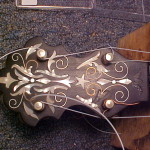 |
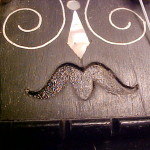 |
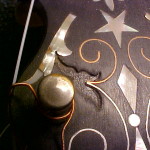 |
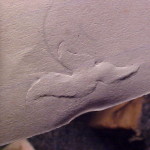 |
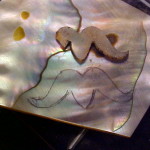 |
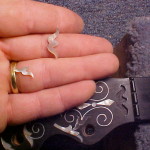 |
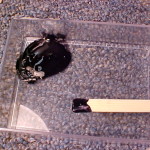 |
 |
